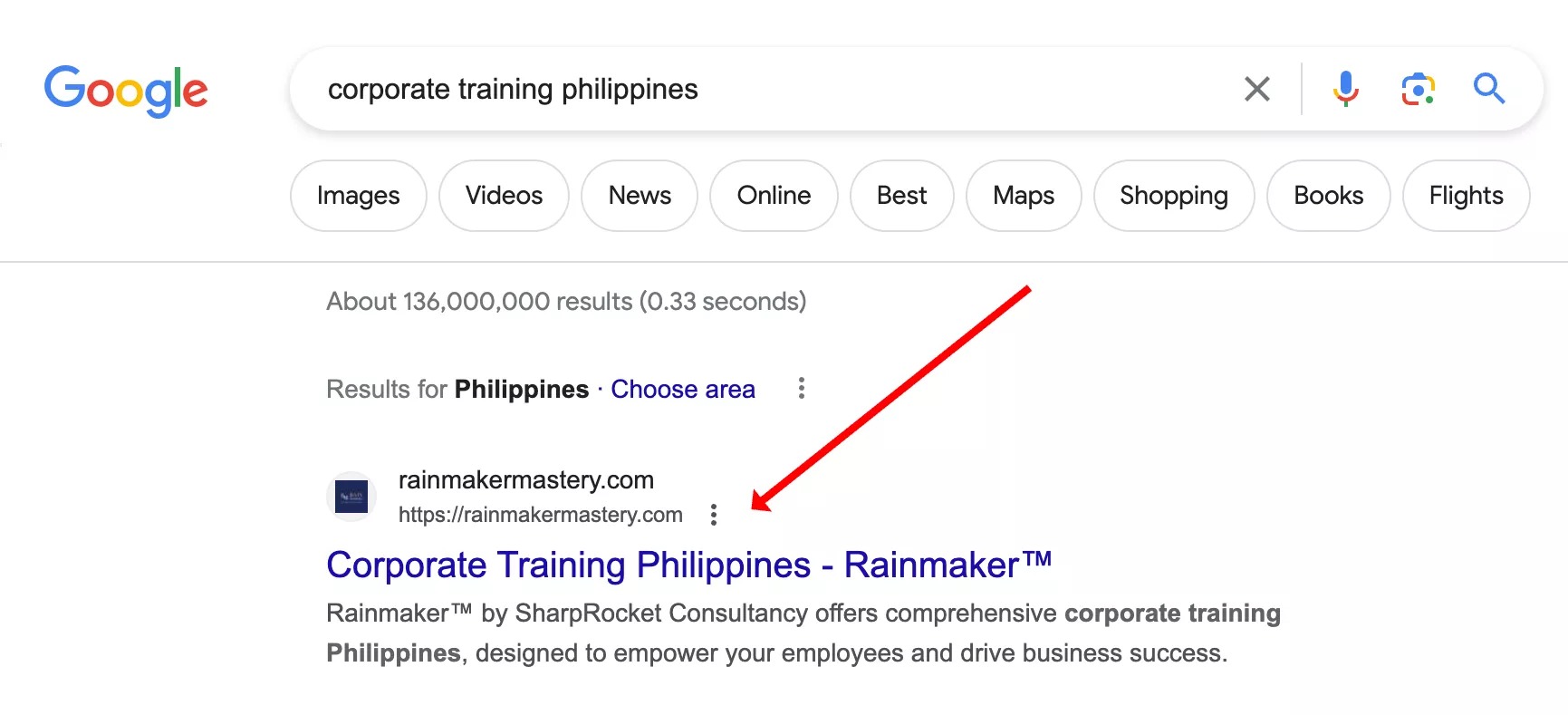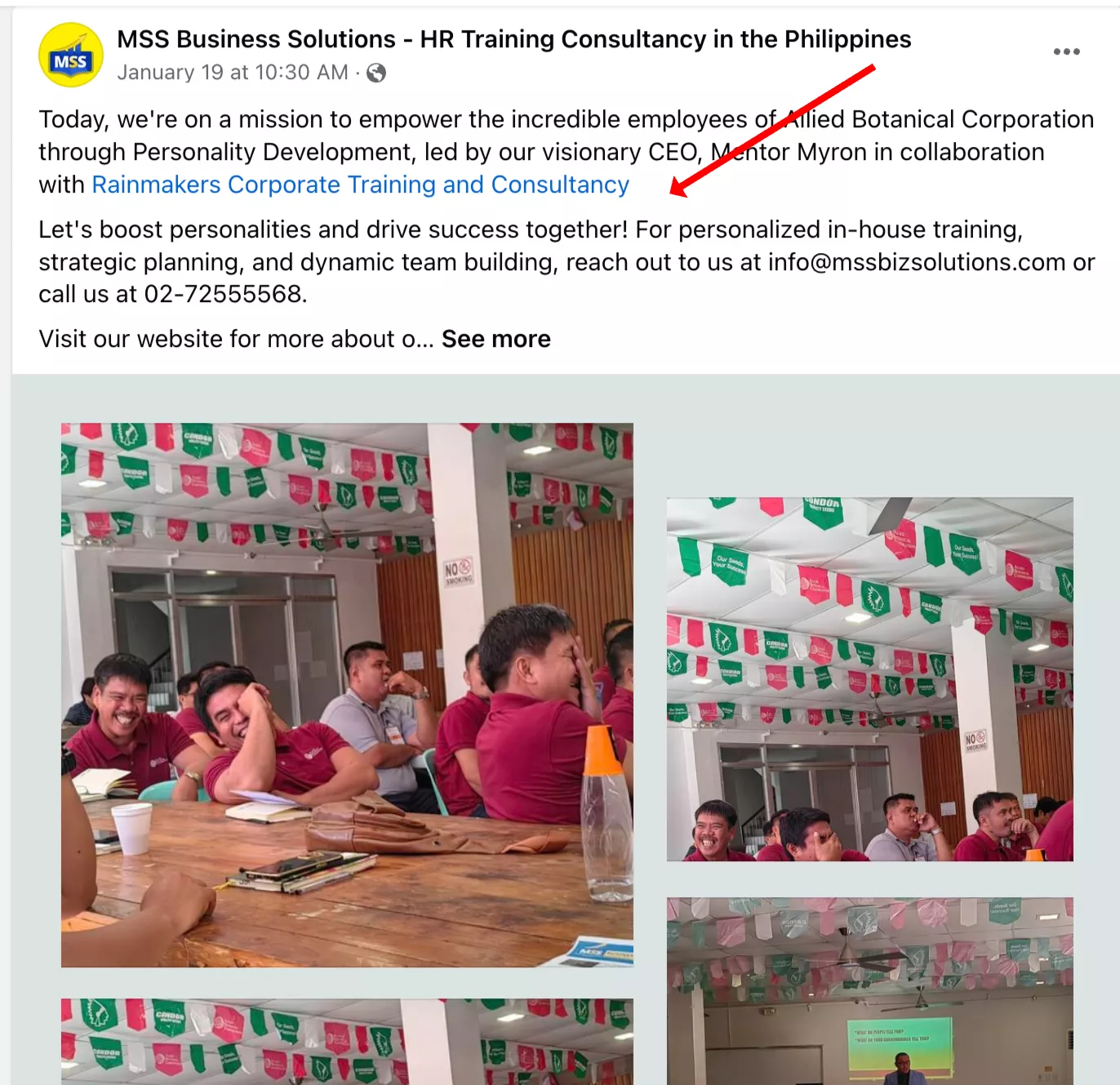The Ultimate Guide to Conducting Training Needs Analysis
Training needs analysis (or TNA) is the process of identifying observed performance gaps between the current and desired knowledge, skills, abilities, and habits of employees.
Conducting training needs analysis allows you to create customized training design programs that get results for your beneficiaries.
At Rainmakers Training, we start by setting up meetings with prospective clients, asking questions about their training needs, and focusing on identifying their employees' performance gaps.
A need is a deficiency that prevents attaining goals or fulfilling a desired state or situation.
For employees in different organizations, some examples of training needs could be:
- Lack of knowledge of the latest product offerings.
- No facility is available to do one-on-one coaching or mentoring.
- Insufficient number of front-line employees to serve clients’ needs.
Analysis of the ADDIE Model
ADDIE model is a systematic instructional design framework that guides OD and training facilitators in creating educational and training programs.
ADDIE stands for Analysis, Design, Development, Implement, and Evaluation.
Training needs analysis corresponds to the Analysis phase of the ADDIE Model. It is the initial phase where the instructional designer (or training analysts) assesses the learners' needs, identifies the learning objectives, sets learning goals, and analyzes the learning context and constraints.
Mistakes of OD Professionals
Organizational development practitioners and training facilitators tend to make mistakes when conducting training needs analysis. Some mistakes I’ve observed that should be taken into consideration are:
Omitting the Training Needs Analysis (TNA)
If you’re not conducting TNA, you will likely create a training program design that won’t fully address any performance gap. Even so, it won’t directly address the needs of your training beneficiaries (or target participants).
TNA should be in every trainer’s DNA, as it assists them in designing a result-based learning program for their clients' organizations.
Implementing a learning intervention to a non-learning need.
It is best to identify a need if it is a learning need before applying a necessary intervention.
Many organizational development interventions, including strategic planning, organization redesign, quality management, and job design, aren’t learning-centric but could address a non-learning need.
Failing to evaluate the impact of the learning intervention.
When learning interventions are not evaluated regarding their impact on the client’s key result areas, stakeholders are less likely to buy in.
See to it you evaluate learning interventions, such as training programs, for their impact on the stakeholders weeks and months down the line.
Lacking continued implementation or reinforcement.
No follow-through means not having enough support to continue the specific learning intervention.
Invest in the sustainability of learning interventions to see their progress and impact on stakeholders, teams, and organizations.
Absence of endorsement or backing from senior management.
Without buy-in from senior or top management, there would be delays in the full implementation of the learning program.
Create reports and documents to supplement the importance and value of training design programs based on their impact on the business’s bottom line.
How to Conduct Training Needs Analysis
Conducting a training needs analysis requires a step-by-step approach to ensure data is gathered and all specific details needed for TNA are captured. Here is our step-by-step guide to applying a TNA to a client/organization.
Step 1: Determine Your Level of Analysis, Approach, and Objective of TNA (WHAT of TNA)
These three refer to the WHAT of training needs analysis.
Let’s start with the level of analysis.
Every training need is analyzed based on its target beneficiaries.
Levels of Analysis
There are three levels of analysis: organizational level, group or project level, and individual level. Here’s a quick run-through of their differences:
- Organizational level - you analyze the organization-wide goals, needs, and problems to see where training is needed.
- Group or project level: examines jobs or tasks performed by groups and the specific KSA (Knowledge, Skills, and Abilities) needed to attain organizational objectives.
- Individual level - analyze each employee's actual KSA and current performance to determine what specific training needs are required in which area/s.
When determining the level of analysis, see to it from the perspective of the opportunity and problem of the organization. At its current situation, what level of analysis will your TNA should target?
Approach or Technique
There are two classical approaches to use for TNA: opportunity- or growth-based and problem-based.
You use a problem-based approach when gaps in KSA (knowledge, skills, and abilities) need to be addressed.
For example, if your customer service rating is 3.5 when it should be 4.5 or 4.9, a gap of 0.5 should be addressed, possibly through training programs.
On the other hand, an opportunity—or growth-based approach deals with the next-level KSA benchmark of a specific employee, unit, or team.
The focus is on the opportunity or next-level growth of the individual (employee), unit, or team.
Let’s say you’re currently hitting your sales quota of 50 B2B accounts every month. The opportunity-based training is needed to help your sales team increase their performance by 30%.
Checking whether the training needs approach is problem-based or opportunity-based depends on the facts gathered and observation insights, as well as the ability of the HR or OD team to prioritize certain issues to achieve their performance objectives.
Some questions to consider when determining what training approach to prioritize:
- Is there a performance problem that needs to be addressed?
- What issues, needs, and problems arise from the data-gathering methods?
- What is the top management's current direction in addressing the situation of employees?
As OD practitioners, it is essential to identify the KSA employees' needs in order to do their work and meet their performance targets.
You can gather documents from your client/organization showing performance indicators and gaps. We asked for it at our corporate training company to ensure we see exactly any gap they face.
Objectives of the TNA
There are several objectives for doing a TNA. Some of the most important ones are:
- Identifying the KSA needed by a group to design a training program
- Assessing the individuals or groups on the level of their competence.
- Developing the required advancement for organization development (OD) initiatives
Determining the exact objectives of the TNA helps you focus the initiatives of your training interventions on these objectives and evaluate their progress accordingly.
Step 2: Identify Data Gathering Sources, Methods, Tools, and Data Analysis (HOW of TNA)
Your next step in conducting a TNA is examining available data-gathering sources, tools, and methodologies. This is the nitty-gritty part of training needs analysis, where you’ll dig deeper into your target beneficiaries' needs, challenges, and performance gaps.
There are several options for data gathering, but I’ve included here ones that OD practitioners popularly use:
1. TNA Meetings
Schedule a meeting with a client to discuss training needs for the program.
Some questions I often ask include:
- Why did you come up with the particular training program?
- Are there any challenges your target participants face in their daily work?
- Have you observed any issue, concern, or visible problem about this specific area of training need?
- When and where did the issue or problem first occur?
- What has been done to resolve the problem?
- Which other departments, units, or teams are being affected?
The first question often reveals the intention of the top management or in-house HR/OD practitioner in conducting training interventions. This is essential in helping you understand where they’re coming from (context) and how a particular training needs to connect to a desired objective or goal of the management/HR team.
2. Interviews
Interviews are often used with a small number of respondents and when difficult topics need to be discussed (e.g., healthcare, family welfare, mental health, and other issues that are difficult to interpret).
Always maintain a light, conversational tone when conducting interviews to allow respondents to open up about their concerns and challenges. Avoid asking too many questions at a time and ask questions that are easy to understand. Focus your agenda during the interview to maximize time.
3. Observation
The observation methodology of TNA is another level in which the OD/training facilitator directly goes to the client’s facility to observe the natural behavior of target participants.
This is a great way to acquire responses utterly free from bias, as you get direct answers from training beneficiaries.
The key to conducting a practical TNA observation is to observe individuals naturally (without people getting you noticed). Then, input insights relevant to the training needs/objectives you’re looking for into the observing sheets.
3. Focus Group Discussions (FGD)
Often known as FGD in the HR & OD practice, focus group discussions are primarily used to observe group dynamics in a short span.

By tackling difficult topics and getting opinions and data from a group, the training analyst/trainer becomes knowledgeable about the group's specific challenges, which makes them understand the nuances and context of the audience to which they’ll be conducting training.
When doing FGD, choose the groups wisely according to the demographics and objectives of your TNA.
Allow participants to answer questions without pressure and allot a significant amount of time to get answers from them.
5. Surveys/Questionnaire
Training analysts (or trainers) use surveys to collect both quantitative and qualitative data. They can quickly gather data from a large population to help them statistically understand context and performance needs.
Make statements/questions for surveys easy to understand so that various participants can interpret them similarly.
Ensure grammar and language are correct. Pertain to one point per question. Reread the questionnaire to check for consistency of message and flow.
6. Document Analysis/Review
A deeper level of TNA is conducting document analysis or review to get data from past activities of a specific group, unit, or individual. This allows you to create relevant questions for surveys or interviews.
Documents won’t answer questions, so be objective when handling document analysis. Although you may have little information, it allows you to be more investigative about the training needed for the performance of your target beneficiaries.
To capture more accurate responses from your participants, it is best to utilize other data-gathering tools, such as interviews or FGD.
How to Organize Insights From TNA Gathering Methods and Tools?
There are simple, practical ways that I’ve applied over the years to ensure insights and data gathered from various data-gathering tools on TNA will be used optimally when creating a training needs analysis plan. Here are some that you might find helpful:
- Prioritize data and insights that are most relevant to your TNA objectives. The key is to make the necessary information immediately visible for review.
- Run data and needs through a root cause analysis, including interviews and discussions with your HR or OD client, to deep-dive into TNA's primary objective.
- Write down a TNA plan to summarize all insights and data and present it neatly to your client for review.
Step 3: Clarify Project Management Details and Resource Requirements (WHEN and WHERE of TNA)
The next step is to include the requirements to facilitate the training needs analysis.
Identify the resources and support (unit, team, or individual) to conduct the TNA.
For example, if you’re doing focus group discussions (FGD), you may need support from the HR & OD team to contact a sample size of the beneficiaries for discussion interviews.
The resources and requirements depend on the data-gathering method you utilize for TNA.
Here are some samples of resource requirements you need to consider:
- Time and presence of respondents
- Venue for meetings
- Data gathering activities
- Office requirement
- Supplies
- Budget
Some training needs analysis activities (e.g., FGD, observation) may require longer preparation time, while others only require time to discuss details online (e.g., TNA meeting and interview).
Determine what you need to complete this TNA. Be more specific about the resources and requirements for planning and executing it.
Step 4: Highlight critical stakeholders (WHO of TNA)
As mentioned earlier, support from top management and key people in people development is essential for successfully conducting training needs analysis.
Determine the key stakeholders concerned or will be affected by TNA activity. See who gets to be involved in the process. The top management directly supports it, or its target beneficiaries are all company employees.
Specify the key stakeholders in your TNA plan.
KSA in Identifying The Performance Gap
Competence involves knowing the KSA framework, which stands for knowledge, skills, and attitude.
This is essential in identifying the performance gap as part of the training needs analysis phase.
When working with clients through different data-gathering methods, it is essential to determine specific knowledge, skills, and attitude gaps of target beneficiaries.
To give you quick samples of areas of KSA, here’s a run-through overview:
Attitudes
- Curiosity
- Desire to succeed
- Open-mindedness
- Resilience
Skills
- intellectual skills
- Social skills
- Communicative skills
- Physical skills
Knowledge
- Facts
- Figures
- Concepts
- Ideas
When I conduct training needs analysis with our clients at Rainmakers Training, I use this KSA framework to ask questions to determine the deep needs of the target participants.
This would allow us to develop a customized training program that closes the identified performance gaps regarding knowledge, skills, and attitude.
How to Write a Terminal Objective
Terminal objective refers to the overall goal or desired outcome that a training program aims to achieve by its conclusion.
It is usually a statement that consists of the critical knowledge, skills, and attitudes that participants should demonstrate upon completing the training.
Here’s an example of a terminal objective:
By the end of this training, the participants of the sales team will be able to identify customer needs accurately, develop tailored sales pitches, and employ effective closing techniques through the High Impact Sales Framework to enhance sales performance and customer satisfaction.
A terminal objective includes objectives, content, methodology, target participants, and training results.
In my example, the objectives are identifying customers’ needs, developing sales pitches, and employing effective closing techniques.
The methodology is the High Impact Sales Framework. The target participants are members of the sales team. The results could enhance sales performance and customer satisfaction.
Terminal objectives are essential elements in a training program design, as they dictate the focus of a training program. By defining terminal objectives, you’ll be able to see and evaluate the impact of your training program on target participants.
If you’re looking for a comprehensive program on train the trainers or a standalone program on conducting training needs analysis, schedule a call for a free strategy session.
How to Market Corporate Training Programs
One of the significant challenges of freelance L&D practitioners and corporate trainers is learning how to market corporate training programs.
No matter how effective these programs are in changing other people’s lives, you will find missed opportunities if no one provides the training service.
In this guide, I’ll show you five core pillars that are more than just the “publish content and leads will come” mentality.
1. Invest in Networking
This is obvious, but most L&D and training professionals use this to initiate hard selling with others during networking events.
Start by building relationships and offering value as much as possible without expecting anything in return.
Instead of instantly hard-selling your training services without value in return. Essentially, you want others to replicate your value by asking you to join their in-house events and train their employees.
In the Philippines, PTSD offers public events where the best trainers and L&D practitioners gather to attend, listen, and learn from top-caliber speakers. This is also a way for networking and learning from others in the community.
Networking is like planting seeds and reaping the rewards for months, years, or even decades.

It is one of the underutilized tools in marketing corporate training programs.
If done effectively and ethically, it could result in multiple buy-in to your training programs (without actively selling services in events itself).
2. Build An Online Personal Brand
Personal branding is more profound than just posting social updates of influencers.
For the learning and development industry, personal branding is more of an educational, providing valuable information that addresses the particular needs of your target audiences.
Consider giving previews of your talks and training sessions, where a 2-minute video discussing a single topic intently could help potential clients (internal HR teams) see the value of your content and how you deliver it to your participants.
Identify topics that address your audience's challenges, pain points, and problems.
For example, if you’re targeting employees, you can repurpose your talks on workplace ethics and excellence. Or, if you’re speaking about leadership and management for C-Suite and senior leaders, you can repurpose your videos on Five Levels of Leadership.
Hire a copywriter or do the caption writing yourself to contextualize every content you publish.
The key here is repurposing your existing resources while not overspending time marketing your training programs. All the while giving value through your repurposed videos and written content assets.
Consider recordings of training sessions as content assets. Aside from repurposing it, you can utilize it as a portfolio whenever potential clients ask for work samples.
Repurpose video or audio assets into written blog posts to maximize their value and get organic traffic via ranking for target keywords using search engine optimization (SEO).
Utilize social media platforms to its fullest to increase personal brand reach.
Organic marketing is free and can help you build a strong brand for your training company by consistently posting social media content.
This requires a full-week content plan in your social media calendar. You can invest one to three hours a week to create and schedule across different social media platforms - Facebook, Instagram, TikTok, and Linkedin.
3. Create Your Website and Use SEO To Get Organic Leads
Most training companies, L&D practitioners, and consultants use websites as calling cards - underutilizing their impact to drive potential clients to your business.
Search Engine Optimization (SEO) ranks websites in Google’s SERPs for specific commercial and informational keywords that the target audience is searching for.
By ranking for the most important keywords your training or consulting business wants to dominate in the market, you’ll have an immense advantage over other competitors who don’t have the resources and team to utilize SEO as a marketing channel.
Let’s use this corporate training blog as an example.
Our training company, Rainmakers, currently ranks number 1 for the target keyword, “corporate training Philippines”.

It drives tens of organic leads from clients doing Google searches for the term or its relevant keywords.
We also rank for other corporate program-specific keywords like “personality development training Philippines” and “cross-cultural communication training” .
Create dedicated landing pages for each keyword.
So, if you target clients within a specific country, region, or local area, you can include it alongside your target keyword (e.g., corporate training services in Brisbane).
Then, include the keyword in your page's most essential optimization places, including meta title, URL, first sentence, H1, H2, and image alt tags. This would signal to Google and other search engines what you are referencing - given the keyword of your choice.
This approach enables my corporate training company to dominate most of the keywords related to corporate training in just 8 months.
You can use SEO tools like Ahrefs or SEMRush or look at the autosuggest completion feature of Google to find specific corporate training programs people are looking for in your target country or local area.
This helps you identify the most searched keywords, optimizing your pages accordingly.
4. Deliver The Highest Value In Corporate Training
This element won’t be categorized as just “purely marketing”, but as an essential part of delivering the best client service to corporate clients, which can lead to multiple referrals and positive word-of-mouth about your brand.

Aim to excel in all phases of the corporate training process, from training needs analysis to training delivery up to the evaluation part.
The perceived value in corporate training programs includes the quality of transference of learning from the trainers and facilitators to participants and its post-training impact on the dedicated team or organization (based on levels of evaluation).
If you do great work, you’ll obviously acquire repeat training schedules from highly satisfied clients.
5. Joint Venture With Other Training and Consulting Companies
Building and strengthening relationships with like-minded, even competing companies enables both parties to acquire new clients in a mutually beneficial manner.
Not only do they offer similar services, but each of the training companies has strengths that others can complement.
Partnering with other training companies to transfer any inquiries for which your team doesn’t have in-depth expertise is imperative. At the same time, they can share new businesses with your team that has experience delivering training.
At Rainmakers, we partner with AIB Training and MSS Biz Solutions for specific corporate training programs, including team building, customer service, sales accounts management, and English fluency.

This approach enables us to focus on what we’re experts in and craft better transformative corporate training programs for our clients.
Marketing is Building Your Brand
Learning how to market corporate training programs is more than checking off “to-do list tasks” of posting social media content. It has a deep core focal point to build a brand that will last, and clients in the learning and development industry will recognize it as valuable to the industry.


